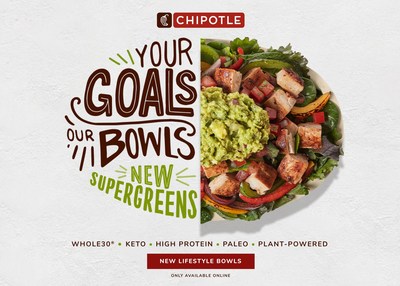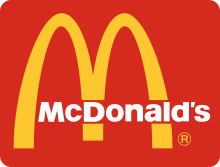Overview
Our next reading assignment is an introduction to semiotics and models of communication. These two topics directly relate to how we understand communication design from a theoretical perspective.
…what is semiotics, and why is it important? Semiotics is defined as the theory of signs. The word “semiotics” comes from the Greek word semeiotikos, which means an interpreter of signs. Signing is vital to human existence because it underlies all forms of communication.
Hall, Sean. This Means This, This Means That : A User’s Guide to Semiotics, Laurence King Publishing, 2012.
We will be reading Hall, Sean. This Means This, This Means That : A User’s Guide to Semiotics, Laurence King Publishing, 2012. ProQuest Ebook Central (Chapters 1 & 2).
You can also look at an excerpt from the book that Sean Hall references: de Saussure, Ferdinand. Course in General Linguistics pgs 65-70, Trans. Wade Baskin, New York, Philosophical Library, 1959
Review Before Reading
Due Date(s)
Your reading response is due the day before the next session to allow time for review.
Instructions
Following the instructions below, read and annotate the text. Because the City Tech Library hosts this week’s readings, use the notes tool in the ebook reader or download the readings for print and annotate by hand.
1. Open the reading.
You may open and download the reading from the City Tech Library Hall, Sean. This Means This, This Means That : A User’s Guide to Semiotics, Laurence King Publishing, 2012. ProQuest Ebook Central [City Tech Library Card Required]
Or, if you have trouble, access and download the three PDFs:
- Signs and Signing: This_Means_This,_This_Means_That_Ch1.pdf
- Ways of Meaning: This_Means_This,_This_Means_That_Ch2.pdf
- Saussure_CourseGenLing_Exc.pdf (For Reference)
2. Consider these questions.
Here are the questions to which you should respond in your reading response:
- Using an example, define Saussure’s terms sign, signifier, and signified in your own words.
- How are signs employed in visual communication? Provide a visual example from contemporary or historical advertising and explain why the example is considered an icon, index, or symbol in Peirce’s terms.
- How are non-literal devices used to convey meaning in advertising and/or social media? Provide a visual example from contemporary or historical advertising and explain the type of non-literal device (simile, metaphor, metonym, synecdoche, irony, lies, impossibility, depiction, or representation) used and why.
3. Read & Annotate.
Consider the questions/prompts listed above. Start formulating the answers to these questions while you practice close reading with annotations. Because the City Tech Library hosts this week’s readings, use the notes tool in the ebook reader or download the readings for print and annotate by hand.
4. Draft your Reading Response.
Write a draft of your 200-word response in your Writing Portfolio. Check for grammar/spelling errors using Google Docs spell-grammar check or Grammarly. Use the word count tool too. Use links to visual examples to supplement your reading response.
NOTE: Please find unique historical or contemporary examples. Do not use those from the readings. Consider reviewing the Learning Graphic Design History videos to see if there are historical examples that will help support your ideas. Additionally, check out the Design Archives & Collections on the Course Resources OER page, specifically AIGA’s Eye on Design, to find out what contemporary designers are working on.
5. Add your Reading Response in a comment.
When ready, add a comment at the bottom of this post. Paste your reading response from your Writing Portfolio into the comment box. Adjust any formatting issues that may have occurred while pasting.
Resources
More info
- Assignments > Writing Portfolio
- OpenLab Help > Commenting on a Site
- Language, Signs, & Symbols from the COMD Theory OER
- Week 8 Agenda: Signs and Meaning in Communication Design
Texts
- Semiotics > PDFs
- Full Text: Hall, Sean. This Means This, This Means That : A User’s Guide to Semiotics, Laurence King Publishing, 2012. ProQuest Ebook Central
- Full Text: de Saussure, Ferdinand. Course in General Linguistics Trans. Wade Baskin, New York, Philosophical Library, 1959. OpenLibrary.org





 ” alt=”redbull”>
” alt=”redbull”>
 ” alt=”best marketing campaigns: McDelivery”>
” alt=”best marketing campaigns: McDelivery”>
 ?w=2700″ alt=”Chipotle Innovates Lifestyle Bowls By Adding Supergreens Salad Mix And Whole30® Compliant Chicken – Jan 2, 2020″>
?w=2700″ alt=”Chipotle Innovates Lifestyle Bowls By Adding Supergreens Salad Mix And Whole30® Compliant Chicken – Jan 2, 2020″>
Semiotician Ferdinand de Saussure introduced the idea that communication systems of interpretation consist of signs, signifiers, and the signified. The sign is the object or thing that creates meaning, the signified is its physical existence in the form of a word, sound or image, and the signified is the mental concept conjured by our minds. For example, the word “iPhone”, the signifier is the physical representation of the word, and the signified is the image of a cellular device that pops into your mind.
In the case of signs another semiotician by the name of Charles Peirce, distinguished signs between three basic forms, the icon, the index, and the symbol. An icon is a signifier that resembles the signied, an index is linked to what is being signified, and a symbol is the learned relationship between the two. Signs are often employed in visual communication for advertisements. McDonald’s famous golden arches contain all three basic forms of a sign. The iconic golden arches represent the letter “M”, the first letter of the company’s name and the restaurant as a whole. The arches are also directly linked to the restaurant, when people see the golden arches they associate it with the brand, food, and service establishing it as an index. What makes the arches a symbol is the cultural meaning that has been constructed by the restaurant’s relationship to its consumers. Instead of just seeing a yellow “M”, people see it as Mcdonad’s.
Non-literal devices are often used in advertising to engage their audience in creative ways. For example the Dunkin’ Donuts’, “American Runs on Dunkin’” slogan uses the non-literal device of a metaphor. The slogan links the company’s American audience to its products. Dunkin’ Donuts is known for its coffee and baked goods that are consumed in the morning, meaning this would be someone’s first stop on their way to their destination. Also, coffee gives you energy, so customers would be running on the charge of Dunkin’. This works because culturally coffee is a staple in the American breakfast diet, and it embodies the fast paced lifestyle that their audience is a part of.
Saussure’s theory of sign emphasizes internal structure devoted to the cognitive thought process or activity of human minds in structuring the physical (material) or intangible (abstract) signs of their environments or surroundings. A sign conveys meaning, signifiers are things that give meaning to words/images, and signified is what is evoked in the mind – a mental concept. For example, the Mcdonalds Logo would be the signified the slogan “I’m lovin’ it is the signifier.
Signs play a crucial role in visual communication by conveying information, ideas, and messages to an audience using visual elements. They are used in various contexts and for various purposes, including advertising, wayfinding, branding, safety, and more. The design and placement of signs are critical to ensure that they are noticed, understood, and fulfill their communication purposes. For example, the “Only You Can Prevent Forest Fires” ad campaign Smokey the Bear would be the Icon, “YOU” would be the symbol and the index would be the fire and smoke.
Non-literal devices are often used in advertising and social media to convey meaning in a creative, memorable, and emotionally engaging way. These devices go beyond the straightforward or literal presentation of information and aim to capture the audience’s attention and elicit a strong response. An example would Kit Kat, Known for its “gimme a break” jingle and slogan, Kit Kat has become one of the most popular chocolate candy bars in the United States.
Ferdinand De Saussure theorized that systems of communication and language were deeper than the objective labeling of reality. He believed that cultural and social context created a meaning beyond certain objects. The mechanism that this meaning presents itself in comes in three parts, the sign, the signifier and the signified. A sign is something that contains meaning. The signified is its physical manifestation or vessel of communication, and the signified is the concept that, through our own cultural context, we assign to the object. An example of this is a red traffic light (Sign), which is a red light in a metal box hanging above an intersection (Signifier), which we understand as a signal to stop driving (Signified).
Signs are all around us, and their significance is largely correlated to their relationship to us. Charles Sanders Peirce made a distinction of signs between an icon, index, and symbol. An icon is a more literal connection to what is being depicted and its depiction. A realistic painting of a river is an iconic representation of a river because it visually depicts one. An index relies on a causal correlation between the signified and the signifier, like steam representing something warm because steam is caused by water getting hot enough to turn into vapor. A symbol requires a specific learned cultural connotation between a signifier and what is being signified. An example of this is the Nike logo. The signifier is a lone swoosh, but because of our taught cultural context we understand that what is being signified is the brand Nike.
Non-literal devices are commonly used in advertising. If done correctly, the non-literal message will resonate with the intended audience in a more complex way than literal messaging. Non-literal devices make people stop and think, and if understood correctly it can cultivate a deeper relationship between brand and audience. Irony is a commonly used form of non-literal communication in advertisement. An example is Burger King’s ad campaign highlighting their product’s absence of artificial preservatives. The copy reads “The Beauty of No Artificial Preservatives” next to a grotusque picture of a rotting burger. As an audience we can understand that the picture is not in fact beautiful and that creates a sense of irony in the advertisement. The right audience, however, will understand that the picture is not in fact beautiful BUT the natural progression of decay means that the burger is made from real food and is a proof of absence of artificial preservatives.
According to Saussure theory:
Sign refers to anything that carries meaning, it’s the combination of a signifier and a signified.
Signifier is the physical form of the sign, such as a word, image, sound, or gesture. It’s what we perceive with our senses. For example, in written language, the word “apple” is a signifier.
Signified is the concept or mental representation associated with the signifier. It’s the meaning that the signifier conveys. In the case of the word “apple,” the signified is the mental concept of an actual apple fruit.
Signs are used in visual communication through various categories as proposed by Charles Sanders Peirce: icons, indexes, and symbols.
An icon is a sign that resembles what it signifies. An example from advertising would be using a picture of a hamburger to represent a fast-food restaurant.
An index is a sign that has a direct or indirect connection to what it signifies. In advertising, an index might be showing a smoker’s yellowed teeth to indicate the health effects of smoking.
A symbol is a sign where the connection between the signifier and signified is based on cultural agreement. An example in advertising is the use of the swoosh logo to symbolize the Nike brand.
Non-literal devices in communication include figures of speech like simile, metaphor, irony, metonym, synecdoche, etc.
Metaphor: “A diamond is forever” (De Beers) uses the metaphor to suggest that like a diamond, love is eternal. The diamond is a metaphor for lasting love.
Saussure defines a sign as two components, the signifier and the signified. The signifier is the physical thing of the sign like a word, image or sound. The signified is the concept that the signifier is referring to. An example of this can be the word “house”. The sound of the word is the signifier and the image of the house in our mind is the signified. Only because of language, were we able to associate the sound “house” with the actual concept of a house. Signs are used to convey a message. There are three different categories Peirce made for signs. They are icons, index, and symbols. An example of a sign used in advertising is in a McDonalds ad for free wifi, where they use french fries to make the wifi symbol. In pierces definition, symbols are put together by other things without actual relationship. In this case, fries are shaped into the wifi symbol. Non-literary devices are metaphors, irony, and metonymy. They can be used to make things more engaging or memorable to the viewer in advertisements or social media. For example a metaphor can be used in an ad showing a bottle of hot sauce as a fire extinguisher communicating how hot the sauce is. Using these non-literary devices can make the design more memorable for the audience that can make a bigger impact for the goal of the advertisement. They draw more attention while making a deeper understanding of the product.
In Saussure’s terms of sign, it had two elements to their structure which are the signifier and the signified. The signifier is the part of communication that carries the message, for instance, the sound of a certain word such as “serum” or “photo album”. And “the signified” is the thing that was signified by that sound, such as the actual product “serum” or a physical “photo album”. The signifier conveys a message, and the signified is the actual thing or a concept.
In visual communication, signs are not immediately transparent to the audience. Audiences will have to learn the conventions of the language. Unlike signs, Icon has a sort of resemblance between the signifier and the signified and it’s not necessary for the audience to learn things beforehand. Index has a nonarbitrary between the signifier and the signified. They are usually common sense or things that are obviously connected to each other.
Non-literal devices would have a connection or be compared to a similar thing to convey a message. For example, the tagline of the Red Bull commercial is “Red Bull gives you wings”. “Wings” are usually connected to words like “fast”, “quick”, “speed” and “efficient”, especially in games. Audiences can easily connect the tagline “Red Bull gives you wings” to “increase efficiency”.
 ” alt=”redbull”>
” alt=”redbull”>
Good effort Alice. Please take a look at my comments/suggestions in Hypothesis. You missed a few key concepts. See if you can review these ideas again and submit another comment with revisions. Let me know if you have questions!
NOTE: Private response is visible only to instructors and to the post’s author.
Saussure shows that there are two elements in signs, signifier and signified. The example used in chapter one is house. Signifier means the physical thing, when you see a house, you’ll know it’s a house. Signified is what is on your mind, when you see or hear the word house, your brain will know what house is. Images or symbols are signs that are employed in visual communication to send ideas, messages, or meanings. A visual example from contemporary or historical advertising is McDelivery’s “Skip The Dishes.” The example is considered an icon, index, or symbol in Peirce’s terms. They used pans and plates to create an image of a Big Mac, advertising for McDonald’s delivery app to get people to order so they don’t have to do the dishes. Non-literal devices are used in advertising and/or social media because they create connections and emotions with the audience. Non-literal devices are metaphors, irony, humor, and many more. An example of a non-literal device is Red Bull, they always say “Red Bull gives you wings.” Even though you don’t get wings when you drink it it’s an energy drink and it’s meant to say you can do anything after you drink Red Bull.

 ” alt=”best marketing campaigns: McDelivery”>
” alt=”best marketing campaigns: McDelivery”>
Saussure introduced the concept of signs in semiotics. A sign consists of two parts: the signifier and the signified. The signifier is the physical form of the sign, like a word, image, or sound. It represents a tangible concept. The signified, on the other hand, is the meaning associated with the signifier. It represents the abstract mental idea that the signifier evokes. For example, let’s take the word “apple.” The signifier is the combination of letters and sounds that make up the word “apple.” The signified is the mental concept of the actual fruit, including its taste, shape, and so on. Signs are used for visual communication and can have multiple meanings. Charles Sanders Pierce classified signs into three categories: icon, index, and symbol. An icon is a sign that resembles or imitates what it represents. For instance, a realistic painting of an apple directly resembles the actual fruit. An index is a sign that has a direct cause-and-effect relationship with its representation. For example, a photograph of a smoky room is an index of fire because it’s caused by fire. Lastly, a symbol is a sign where the connection between the signifier and the signified is arbitrary. Words are the most common examples of symbols. The word “apple” does not physically resemble the fruit, but it’s conventionally used to symbolize the fruit. Non-literal devices, such as metaphors, are often employed in advertising and social media to evoke the audience’s imagination or emotions. For instance, a metaphor comparing the smoothness of a car’s ride to “floating on a cloud.” In this case, the quality of the ride (signified) is linked to the experience of floating on a cloud (signifier).
Saussure’s term of sign is defined by 2 things, the signifier and the signified. The signifier is the medium of communication, in the painting of Adam and Eve this is the apple. The signified is the meaning of the signifier, in the case of the Adam and Eve painting it is temptation.
When it comes to Pierce’s meaning of signs, there is the icon, index, and symbol. The icon is a signifier that is similar to the signified, an index is connected to what is being signified, and a symbol is the relationship between the icon and index. Chipotle is a good example. Their logo sports a chili pepper which connects to their representation of an authentic Mexican grill. The colors of the logo are directly connected to the restaurant and the Mexican aesthetic of hot and sandy, that’s where red and brown come in. And their ads are always showing how they are a healthy alternative to other fast foods.
Non-literal devices can bring in customers and show them that they can have the kind of stuff they need without compromising the things that they want. For example, Subway’s slogan of “Eat Fresh”. Although the idea of food that has been sitting overnight isn’t necessarily fresh, the brand’s slogan is engrained into customers that they can eat healthy but still have fast food. Every Subway enjoyer praises how they love it because they can eat.
According to Saussure, there is a system for the people to fully understand language, three things are needed, a sign, a signifier, and a signified. A sign is the object/subject in question, which contains meaning, this consists of a signifier and a signified; a signifier is the word used for the object, what gives it meaning, or what the object is called and a signified is what the object means, the emotion that evokes which can change depending on the audience and context. For example, a dog would be the sign, the word “dog” or the animal’s name or the phrase “human’s best friend” are the signifiers and the actual animal is one example of what is being signified.
This is the Target logo, this logo is a symbol because it is literally a target but when people familiar with the company sees it they think of the Target stores, which can signify many things, quality, deals, convenience, etc.
This Advil advertisement is a non-literal device, it uses the visual of lightning striking someone’s head to signify a headache when the audience sees it, it can convey intense pain. Advil is saying that their medicine can help alleviate this strong pain.
For Saussure, signs had two elements to their structure: the signifier and the signified. Two things that make one. The signifier was that part of the communication That talked about the message and signified is one that was told through sound. For Charles sanders pierce, which saussure worked with, signs have three elements to it, a sign, a sense or a meaning, and a reference.
.
This is a example of contemporary advertising its the well known mcdonalds logo, its gone through many changes but the only thing that hasn’t changed was it being a letter ‘M’ is an icon because its known as one thing which is , fast, cheap, and easy food that taste great n is known around the world with js the ‘M’ logo
This contemporary advertising is a depiction. It’s the Dunkin donut logo and as of recently they changed the logo by adding the running man and taking out the word “donuts”. it depicts a man running and gives a meaning that drinking coffee from dunkin donuts gives you the energy to go quick in your daily life, like your running.